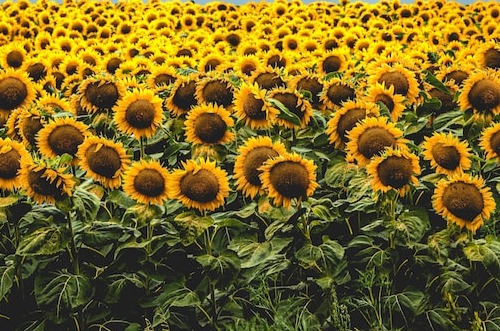W32: Sunflower Update

In W32 in the sunflower oil landscape, the United States Department of Agriculture (USDA) maintains a nearly constant global oilseed production forecast of 539.7 million metric tons (mmt) for the 2023/24 season, compared to July. This is due to July’s rainfall improving yields and increasing sunflower seed and peanut production, particularly in Ukraine and Russia. However, the European Union's (EU) sunflower seed production is restricted by lower outputs in Romania, Spain, and France. The EU's sunflower imports in the 2022/23 season reached 2.2 mmt, an increase of 100% compared to the 2021/22 season. Notably, Ukraine's contribution to these imports rose significantly from 0.4 mmt the previous year to 1.8 mmt in 2022/23.
France's sunflower production in 2023 is projected to reach 1.98 mmt, an 11% increase from the previous year and the highest output in a century, despite a 3.7% reduction in cultivation area to 832 thousand hectares (ha). As of August 1, 2023, the initial yield forecast stands at 2.38 mt/ha, indicating a 15.2% year-on-year (YoY) growth compared to 2022 and a 6% increase over the five-year average.
Russia's oilseed crop sown area decreased from 18.6 million ha in 2022 to 17.6 million ha in 2023, primarily due to reduced sunflower cultivation from over 10 million ha to 9.8 million ha in 2023. Sunflower prices in Russia, which started increasing in the summer, continued to rise in August. Varying by region, prices went up by 15 to 20% in Jul-23, driven by higher export prices for Russian sunflower oil. The upward trend in sunflower prices has persisted through August.
In Ukraine, sunflower crops could face significant losses of 30% to 70% due to damage caused by downy mildew. The State Production and Consumer Service reports that the parasitic infestation of sunflower plants by the worm stands at 1 to 4%, with populations ranging from 4 to 9 on the root. The regions affected include Poltava, Cherkasy, Khmelnytskyi, Ternopil, and Kyiv. Meanwhile, in Turkey's Çanakkale region, the extreme temperatures are projected to lead to a 60% reduction in sunflower yield for 2023. The expected harvest in this area, covering 28.9 thousand ha, is estimated at 85 thousand mt.
The sunflower crop in key Kazakhstan regions, particularly Pavlodar and Abai, which contribute over 50% of the nation's sunflower production, could suffer losses of up to 40% due to an ongoing drought. These regions have experienced 1.5 to 2 months of rainless conditions and above-normal temperatures during the growing season. Therefore, the forecast for Kazakhstan's 2023 sunflower seed harvest is expected to drop 17% YoY to 850 thousand mt.
Lastly, Argentina's 2023/24 coarse grain season started with the initial planting of sunflower batches in the Northeast (NEA) and Central regions, specifically the northern part of Santa Fe. This season, sunflower cultivation is expected to cover 1.95 million ha, representing an 11.4% decrease compared to the previous year. The national planting progress has reached 2.7% as of W32.




